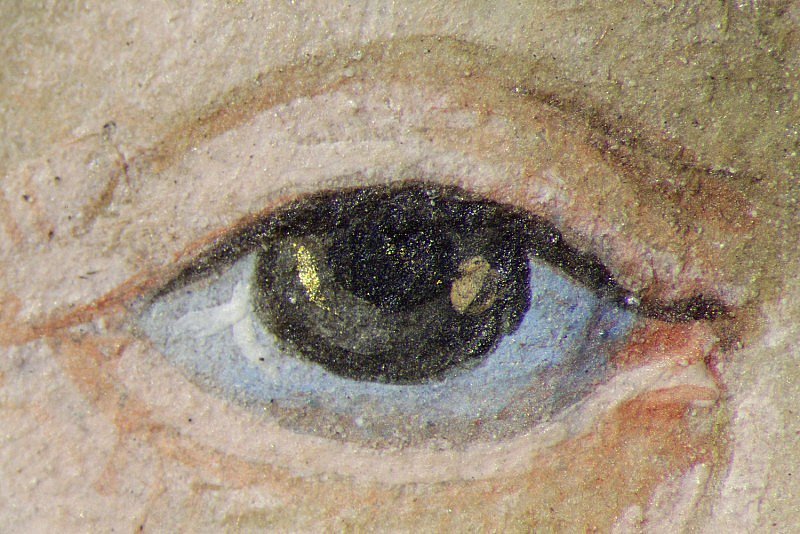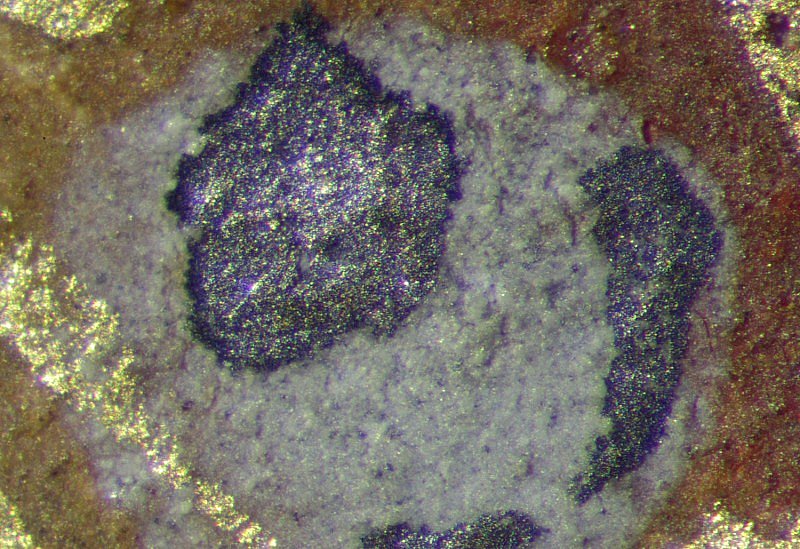The Painter of Additional 15677
Artists
Most of the large miniatures and historiated initials were illuminated by an artist named the Painter of Additional 15677 after another Book of Hours (London, BL, Add. MS 15677). He was a competent and prolific professional. His figures, though stiff and puppet-like, with stereotypical faces, are well proportioned. His modelling is conventional, but he created pleasing sequences of shadowed passages and shell gold highlights. Although his colour scheme and method of painting are no match for the luminous palettes and sophisticated techniques of the other three artists, he reused creatively a wide range of designs circulating among them and other contemporaries. He painted the Calendar’s historiated borders with admirable topicality and the architectural borders throughout the volume with convincing perspective.


Christ as Saviour of the World (prayer Salve sancta facies)
This page was illuminated by the Painter of Additional 15677. Christ’s image is framed within an elaborately carved wooden structure casting shadows on the pink wall behind. It incorporates three-dimensional images of saints and the story of St Veronica painted in shell gold on a monochrome background, simulating a scene carved in relief. The frontispiece to the prayer ‘Hail, holy face’ fuses two popular devotional images – Christ as Saviour of the World (Salvator mundi), blessing and holding a crystal globe, and the Holy Face, Christ’s true image. The latter, not made by human hands, was miraculously imprinted on St Veronica’s cloth (known as the vernicle, sudarium or the Byzantine mandylion), when Christ wiped his face on the way to Golgotha.
Christ’s eyes reflect heavenly light, their glow painted in shell gold on one side, and a mixture of two luminous colours, vermilion and lead-tin yellow type I, on the other (hotspot 1). The globe is a pictorial study of reflection and refraction. Its silver highlights appear bright on the left side, but very dark – as if tarnished – on the right side. This may have been an intentional effect, aimed at conveying the three-dimensionality of this sphere. The dark grey outlines which decorate the grey gems in the medallion (hotspot 2) also contain silver.